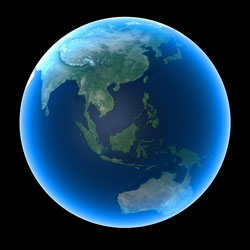Risk of Exposure
While melioidosis infections have taken place all over the world, Southeast Asia and northern Australia are the areas in which it is primarily found. In the United States, the bacteria that causes melioidosis has been identified in Mississippi, Puerto Rico and the U.S. Virgin Islands.
In 2022, an investigation by state partners and CDC discovered the bacteria that causes melioidosis, B. pseudomallei, in the environment in the Gulf Coast region of Mississippi. This was the first time B. pseudomallei was detected in the continental United States. It is unclear how long B. pseudomallei has been in the environment and where else it may be found in the U.S.; however, modeling suggests that the environmental conditions found in the Gulf Coast States are conducive to its growth.
Around a dozen cases are identified each year in the United States and have primarily occurred among travelers and immigrants coming from places where the disease is widespread. Occasionally patients with melioidosis in the United States have had no history of travel to areas where the disease is commonly found.
The greatest numbers of melioidosis cases are reported in:
- Malaysia
- Northern Australia
- Singapore
- Thailand
Cases are also frequently reported in:
- Cambodia
- India and Sri Lanka
- Indonesia
- Hong Kong
- Laos
- Myanmur (Burma)
- Southern China
- Taiwan
- Vietnam
Outside of Asia and Australia, cases have been reported in:
- Parts of Africa and the Middle East
- Brazil
- British Virgin Islands
- Ecuador
- El Salvador
- Guadeloupe
- Guyana
- Martinique
- Mexico
- Panama
- Peru
- Puerto Rico
- The South Pacific (New Caledonia)
- United States
- U.S. Virgin Islands
Related Links
